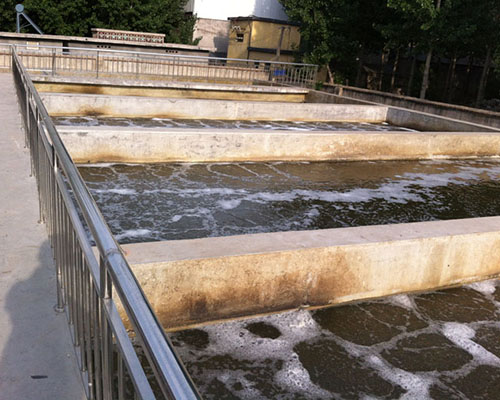
Home Products Sewage Treatment Bacteria Petrochemical Wastewater Treatment Bio Live Aerobic Bacteria for Cleaning C
What is the reason for the low COO removal rate in the aerobic tank?
①The aerobic tank sludge is aging and the sludge age is long
②The sludge load in the aerobic tank is high, the sludge age is short, the return flow is large, and the residence time is short
③Low sludge load in the aerobic tank, long-term high dissolved oxygen leads to self-oxidation of sludge (low removal, high dissolved oxygen), more finely divided sludge, and less activated sludge
④Insufficient dissolved oxygen in the aerobic pool
⑤Insufficient nutrients or unbalanced ratio of nutrients (N, p ratio is too high)
⑥The COD removal rate of the anaerobic tank is low, the anaerobic hydrolysis effect is poor, and the effluent COD concentration is too high
⑦Raw water contains toxic substances and sludge is poisoned
⑧The cumulative value of inorganic salts exceeds the specified range
⑨The impact load of the aerobic tank is large or the sludge bulking phenomenon occurs in the aerobic tank

The function of aerobic bacteria;
1. Because the sporozoflora has a strong resistance to external harmful factors, the sewage treatment system has a high load impact resistance and a strong treatment capacity. When the sewage concentration changes greatly, the system can also operate normally to ensure the stable discharge of the effluent.
2. Aerobic bacteria can effectively remove BOD, COD and TSS, significantly improve the sedimentation capacity of solids in the sedimentation tank, and increase the number and diversity of protozoa;
3. Quickly start and restore the system, improve the treatment capacity and impact resistance capacity of the system, effectively reduce the amount of remaining sludge, reduce the use of flocculant and other chemicals, and save power.
Name: Nicole Yu
Mobile:+86 17718148007
Tel:+86 17718148007
Whatsapp:8617718148007
Email:sales@kashionbiotech.com
Add:No.6, Zhanxi Road, Yaohai District, Hefei City, Anhui Province, China.